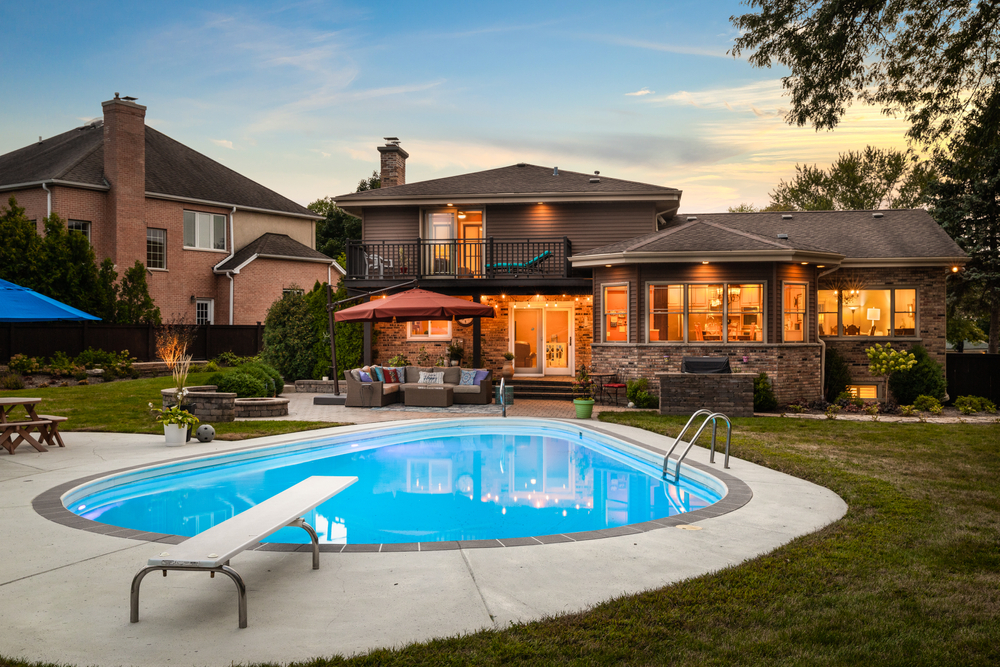For anyone considering installing them on their property, understanding the expected cost of inground swimming pools is naturally an important element. What are some general averages here, and which key factors influence whether your inground pool costs will come in above or below these averages?
At Packman’s Pools, we’re proud to offer a huge range of inground pools, spas and related products to clients around Salt Lake City, Utah and nearby areas. Here are some basics on the cost of inground swimming pools and what to expect, from the general averages to the chief factors that influence them.

Broad Cost Averages
While these will vary significantly based on the factors we’ll go over in a moment, here are some general cost averages for installing inground pools, depending on the material being used:
- Concrete: Because concrete is relatively affordable to pour and can be used to create almost any shape or size, concrete pools are some of the most popular. On average, homeowners will spend between $50,000 and $100,000 on a concrete inground pool.
- Fiberglass: Pools made from fiberglass tend to cost less than their concrete counterparts (around $40,000-$60,000), but they’re also limited in terms of size and shape.
- Vinyl: These pools are usually the least expensive option at around $35,000-$50,000. They’re also easy to maintain and have a smooth surface that’s gentle on swimmers’ feet.
Key Factors Influencing Cost of Inground Swimming Pools
Here are several of the major variables that can impact the cost of inground swimming pools:
Pool Size and Depth
Naturally, one of the largest factors that can affect the cost of an inground swimming pool is its size and depth. Larger pools require more materials and labor, which can significantly increase the overall cost. Additionally, if you want a deeper pool, it will likely cost more due to the excavation and installation of additional plumbing and equipment.
Pool Material
As mentioned earlier, the material used for your inground pool can greatly impact its cost. Vinyl pools are generally the least expensive option, followed by fiberglass and then concrete. However, each type has its own benefits and drawbacks in terms of durability, maintenance requirements, and customization options.
Custom Features
If you’re looking to add custom features, these may increase your costs by varying amounts. Some options here include:
- Special lighting: This can add ambiance to your pool and make it more usable at night.
- Water features: Popular options include waterfalls, fountains, and jets that create a current for swimming in place.
- Steps and entryways: You may be able to save on costs by opting for standard steps or ladders instead of custom-made ones.
- Diving boards and slides: These can be fun additions, but they require careful installation and ongoing maintenance.
- Spa addition: If you plan to use your pool for relaxation as well as exercise, consider adding a spa area with jets and seating – but also consider the increased costs that will come with it.
Landscaping and Deck Work
For many pools installed in a backyard, the surrounding landscaping and deck work must be considered when it comes to overall pool cost. For instance, if you want a concrete or brick patio around your pool, this will add to the total cost. If you want to add plants, trees, and other greenery around your pool area, that will also increase the overall cost.
Additionally, there are various types of decking materials that can impact the cost of your pool installation. Some popular options include wood, composite, concrete, and stone. Each of these options has its own benefits and costs associated with them.
Location-Based Labor and Permit Costs
Because the cost of labor and permits can vary greatly depending on where you live, it’s important to consider these factors when budgeting for a pool installation. In some areas, obtaining the necessary permits may be more expensive or require additional inspections, which can add to the overall cost.
Labor costs can also vary based on location. For example, if you live in an area with a high cost of living, you can expect to pay more for labor compared to someone living in a less expensive area.
It’s important to research local building codes and regulations before starting your pool installation project. This will help ensure that your pool is built safely and legally, avoiding any potential fines or delays.
Maintenance and Operating Costs
It’s also vital not to overlook the ongoing maintenance and operating costs associated with owning a pool. These can include:
- Chemicals for treating the water
- Electricity for running pumps, filters, and heaters
- Water usage
- Cleaning equipment and supplies
- Repairs and replacements for any damaged or worn out parts
It’s important to budget for these expenses in addition to the initial installation cost.
At Packman’s Pools, we’re proud to offer the best selection of inground pools available around SLC, Utah and nearby areas. Contact us today to request a personalized quote, or to schedule a consultation with our team!


